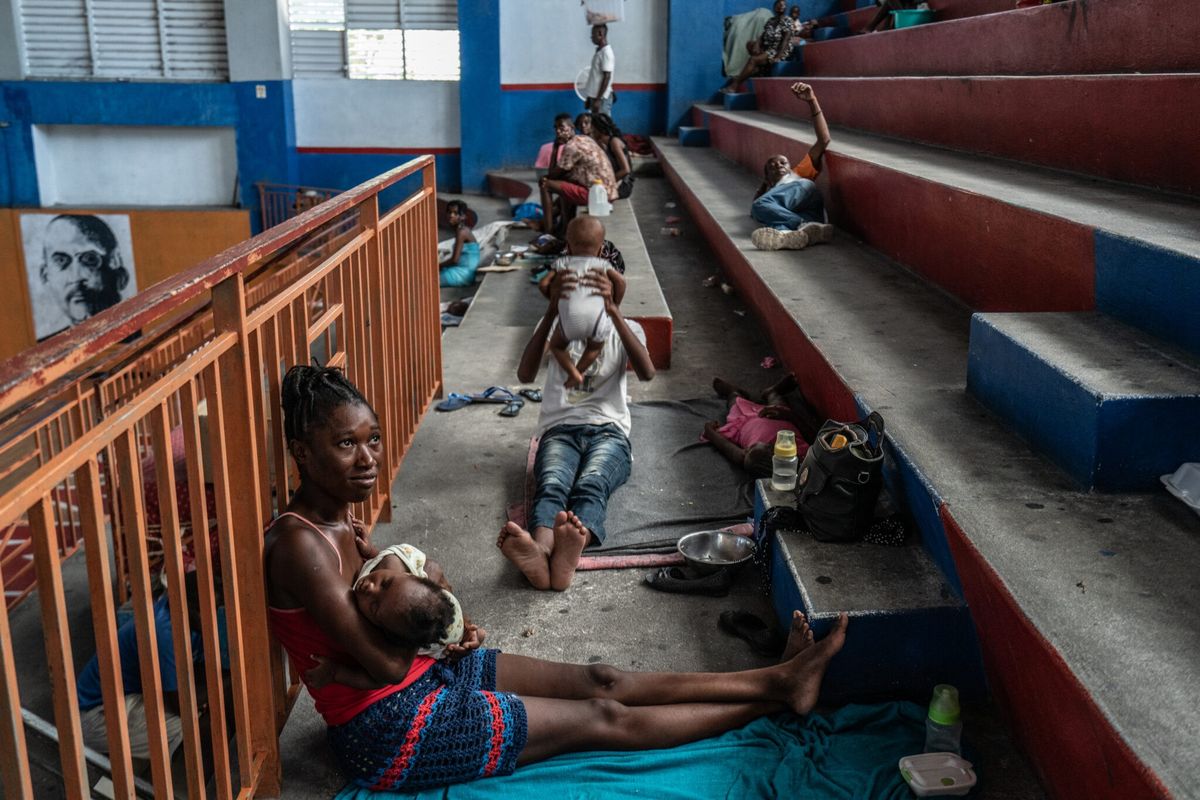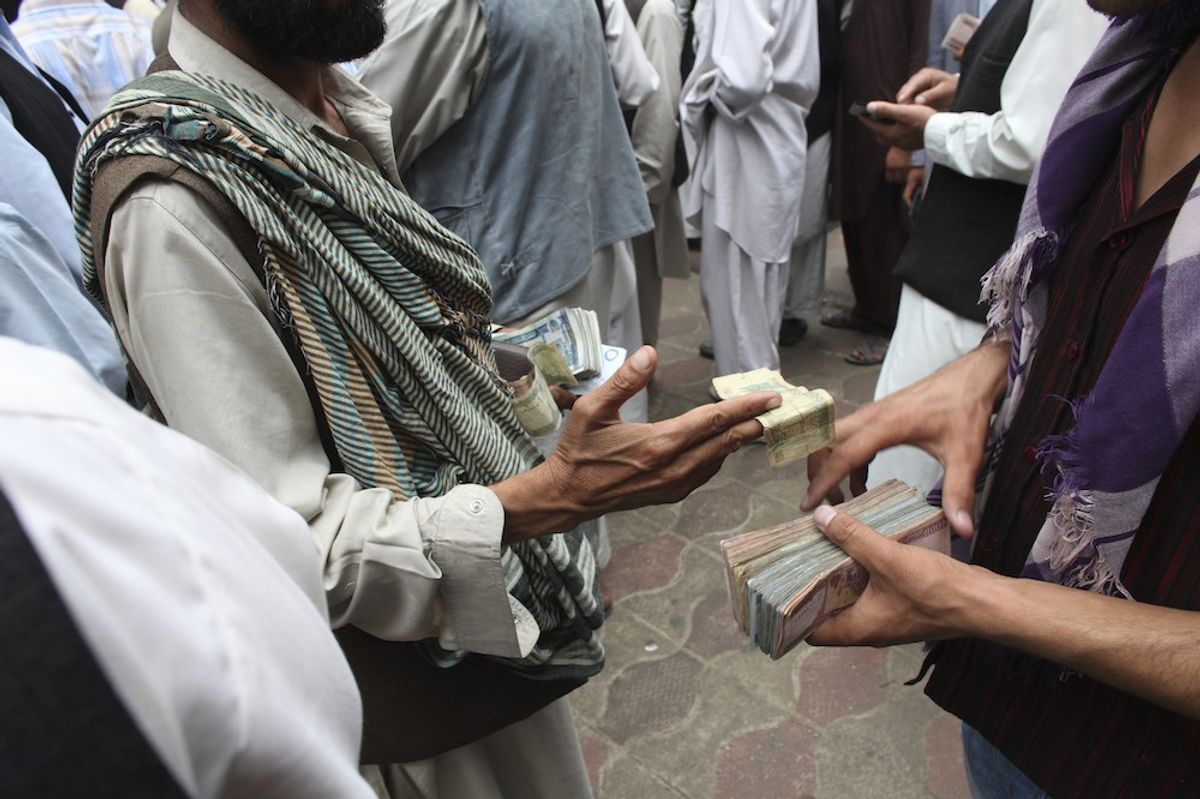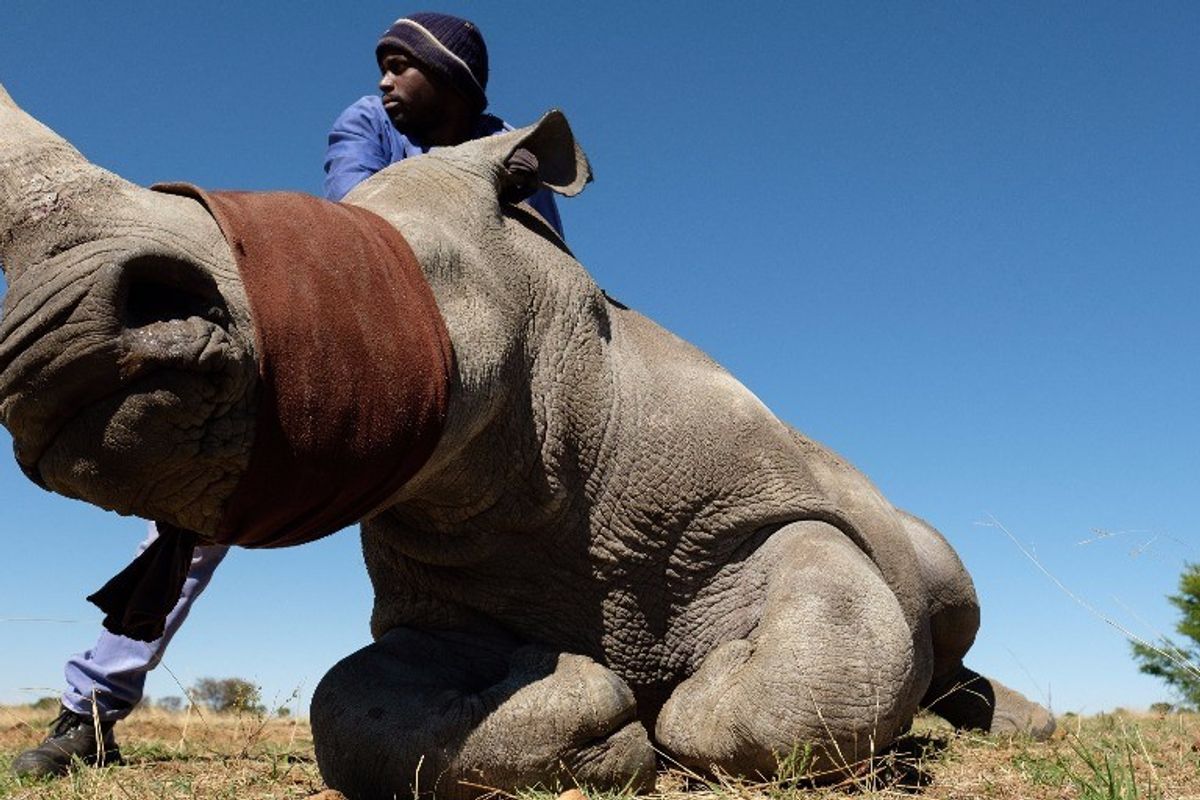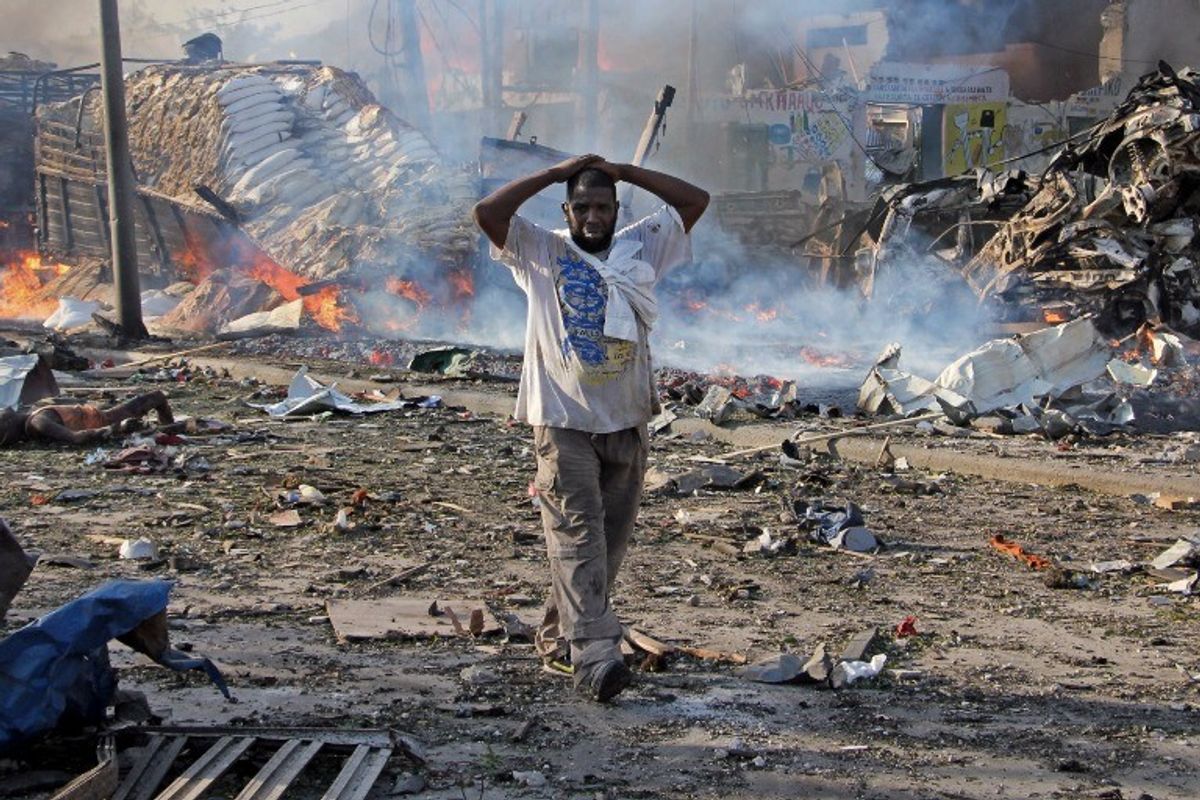Having carried out several attacks in the last couple of months, al Shabaab remains a “very high” threat to security in Somalia and surrounding countries, says Phil Carter, former U.S. Ambassador to Cote d’Ivoire and Guinea. According to Carter, the broader effort to combat al Shabaab really “comes down to the question of the development of the federal government of Somalia.” When analyzing the al Shabaab threat, “You have to look at the enabling environment in which they operate. It all comes down to governance,” he says.
The Cipher Brief: What is your assessment of al Shabaab’s current capabilities? Where are the group’s current bases of operation?
Phil Carter: Al Shabaab has morphed to become more of a regional terrorist organization and should no longer be considered an insurgency group within Somalia. They may have aspirations to claim territory in Somalia in terms of having a state, and that is part of the parcel that they still hope to achieve, but they have taken on more of an asymmetric structure to their operations and to their organization.
Let’s be clear, al Shabaab maintains elements throughout south-central Somalia. Things have significantly improved in Somalia, if you compare where that country was maybe ten years ago, but that’s a pretty low bar.
With regard to al Shabaab bases, they are no longer in control of most of Mogadishu. They’ve been pushed out of many of the urban centers in Somalia. I have to say that they have not been pushed out by force; they have withdrawn ahead of African Union Mission In Somalia (AMISOM) troops and others. But they have slipped back in.
Al Shabaab still maintains a presence in Mogadishu, Beledweyne, and Kismayo. They are much smaller and much more subterranean, but they are there.
In addition to that, they have a presence in Kenya and probably have operatives in Uganda and elsewhere in the region including Djibouti.
It is difficult to say what central piece al Shabaab controls and where their central headquarters are located. I would say that it is a bit more decentralized. For lack of a better term, they are smaller and leaner, but much meaner.
TCB: What is al Shabaab’s threat level in Somalia and surrounding countries?
PC: It is a very high threat level; they can act whenever they desire to do so.
Al Shabaab does face some challenges. AMISOM has been quite effective in pushing them out of cities. But let’s be clear, al Shabaab has been conducting attacks throughout the past summer, with some of them being quite dramatic in terms of assaults on AMISOM troops and facilities. They’ve had a recent attack in Mogadishu and car bomb attacks against the Mogadishu airport where AMISOM troops and UN offices are located.
So they can move within Mogadishu, which is perhaps the most protected city by external and internal security forces. The Somali intelligence and police services are actively there trying to thwart them, and they have succeeded in rolling up certain cells, but attacks continue nonetheless.
There was a suicide attack back in July that was lead by a former parliamentarian. So al Shabaab is able to recruit.
The group also conducts operations outside of Somalia. Their most recent one was last week in Mombasa, Kenya, where some radicalized youths blew themselves up at a police station.
There may be some constraints on what they can do. Their financing has been somewhat constrained. The loss of Kismayo and the port fees that they were collecting there have made it more difficult. But they are still extracting taxes from the communities that they fall into after AMISOM has swept through and ostensibly pushed them out.
TCB: Does the group still receive a substantial amount of finances from illicit charcoal trade and taxation? What can be done to counter their sources of revenue?
PC: Al Shabaab’s revenue sources, namely the charcoal trade and port fees, have been significantly constrained. The group is now working with a smaller income base, and that is always going to hurt them.
But they continue to extract taxes from local communities through road fees and extortion. They may also be involved in some smuggling activities and are looking at continued external support from the individuals in the Gulf and the diaspora.
TCB: There have been reports that some al Shabaab members have pledged allegiance to ISIS despite al Shabaab remaining an al Qaeda affiliate. How has the ISIS-al Qaeda rivalry impacted al Shabaab’s operational capabilities?
PC: There is a competition going on, not just in Africa but also around the world, a sort of tension or rivalry, between al Qaeda and ISIS. It’s had its bearing in North Africa in the Libyan context, where there is competition between Mokhtar Belmokhtar and his group and ISIS groups. You’ve seen some of these challenges in Nigeria with Boko Haram. The same thing exists within East Africa – elements that are supportive of ISIS are present, some of which may have come from al Shabaab.
But al Shabaab has exhibited significant discipline over its membership not to join ISIS. They still remain an al Qaeda affiliate, and they have a significant capability with their Amniyat force (secret police) to expend discipline to their members that aren’t loyal, and in this case, those who would adhere to ISIS.
There is tension, but is it affecting al Shabaab’s ability to conduct operations? No.
TCB: What has been done, and what more can de done by both the U.S. and regional actors to beat back al Shabaab?
PC: A couple of things. One, it determines how you define the problem. I was at a recent function where a senior military official describing the situation in his country indicated that the insurgency would be eliminated but that the terrorism would continue. Well, if you are looking at al Shabaab as an insurgency within Somalia, then there has been an effective effort by AMISOM to roll that back. But has AMISOM been able to extricate the terrorist character out of Somalia? No.
The problem has been that AMISOM and their operations have essentially gotten ahead of the Somali government’s – and I say government in quotations – ability to administer and provide security once a town, a village, or an area has been ostensibly cleared of al Shabaab.
With regard to holding and building up areas, there is a new effort on the part of AMISOM moving to stabilization operations. But frankly, I think that is aspirational. They lack the resources. If anything is going to happen, the international community needs to provide more resources to AMISOM, including air assets – we’ve been helping out a little bit there – but they need to be buffed up. There also needs to be more done on the civilian security side by AMISOM and police units to provide security once a community has been liberated or cleared of al Shabaab.
But more importantly, it comes down to the question of the development of the federal government of Somalia. It’s a government on paper, and it’s ability to extend control beyond Mogadishu, some would even say within internal parts of Mogadishu, is limited at best. It’s totally dependent upon donor assistance, which is woefully inadequate.
If you look at the strategies that have been expounded by the donor community about Somalia, they have been talking about how to create a country that is going to be entirely dependent upon donor assistance to address security, development, and humanitarian challenges. There is nothing in there talking about a self-reliant state.
Part of the problem is poor governance, and I have to stress this, within Somalia is a critical shortcoming. They don’t have the resources to fill it. AMISOM can provide the secure space for that to develop, and they need more resources to do that, but the donors need to come back in and hold Somalis accountable for getting into a situation where they can begin to govern effectively within and outside of Mogadishu.
TCB: Could al Shabaab look to target Somalia’s upcoming parliamentary elections?
PC: I’m sure there will be efforts on the part of al Shabaab to have an impact on that election – “election” within quotations, as I think it is more of a selection process. That in and of itself underscores the weaknesses there. This is something that has been under development and under discussion, and international pressure has been laid on heavily to have elections in Somalia. But, how are you going to have effective elections in that country?
We need to set aside a lot of this aspirational stuff and look at solid, hardcore metrics. Al Shabaab is. They are going to be looking at this election as an opportunity by which to flex some muscle. In some ways, they may want to have a nice election in Somalia. That would dissuade AMISOM from doing more in Somalia.
One of the scenarios we are looking at is if the situation is Somalia is just good enough so that it allows Kenya to pull back its troops and allows others to slow down. Uganda has expressed an interest in getting out. Kenya has expressed an interest in getting out of this effort. They don’t want to be there forever. There is political pressure within Kenya indicating that the Kenyan intervention in Somalia has fostered attacks within Kenya, such as the university attack in Garissa and others.
There is public sentiment by the troop contributing countries (TCC) themselves asking, how long are they going to stay in this game?
And they have sacrificed significantly. The Kenyans, the Burundians, the Ugandans, and the Ethiopians have made significant and even the ultimate sacrifice for this effort. How long will that go on?
TCB: Have the efforts undertaken by the U.S. and regional actors against al Shabaab been effective?
PC: Al Shabaab does not exist in a vacuum. They are recruiting. This idea of concerted attacks by the U.S., allies, or the Kenyans to decapitate al Shabaab simply has not worked effectively. Al Shabaab may have been weakened, but they still conduct terrorist attacks, some of which are quite significant.
You have to look at the enabling environment in which they operate. It all comes down to governance. If you look at the resources that are being pushed forward by the donors, such as the U.S., the European Union, and others in regard to the issue of improving governance, it’s woeful.
Yes, we can spend a lot of money conducting all sorts of military attacks, drone strikes or remotely piloted aircraft system strikes (RPAs), and helping the Somalia national army – which by the way is an army on paper and is really more of a collection of different groups/militias – but that has not produced the desired results.
And then you talk about the Somali national police. Where is the money for that? To me, that is critical moving forward. Let’s say al Shabaab is tamped down to a level that doesn’t have an impact on a national administration in Somalia and becomes more of a nuisance or criminal organization than anything else. Where are the police? What are you going to do with the Somali national army?
The other thing is that eventually AMISOM’s welcome in Somalia is going to wear thin. Somalis are going to grow tired of having foreign troops on their soil. What’s going to happen then?
There are a lot of issues there. The fact is from al Shabaab’s perspective, they don’t have to win; they just don’t have to lose. And that’s a big fact that we need to understand.
Al Shabaab’s ambitions have changed, and they operate beyond the borders of Somalia, threatening Somalia’s neighbors. It’s also an enterprise. Al Shabaab and other terrorist groups probably share tactics and resources. Breaking up this interaction is important. Breaking up the funding cycle is one of the most critical things that we can do. Until such time that al Shabaab is impoverished, they will continue to operate, buy what they need to buy, and conduct their horrible acts.
Further, the ostensible religious underpinnings – and I use that phrasing weakly because al Shabaab’s tenets have nothing to do with mainstream Islam at all – has to be dried up as well. That’s a struggle. It’s an import into East Africa. Unfortunately, some of it has taken root.
These issues are not military questions. These are social, economic, and political elements that have to be addressed within and outside Somalia to diminish the threat of al Shabaab to the region. This will require a long-term tenacious and collective effort that must impose greater accountability by all involved, in particular, the Somali government itself.











